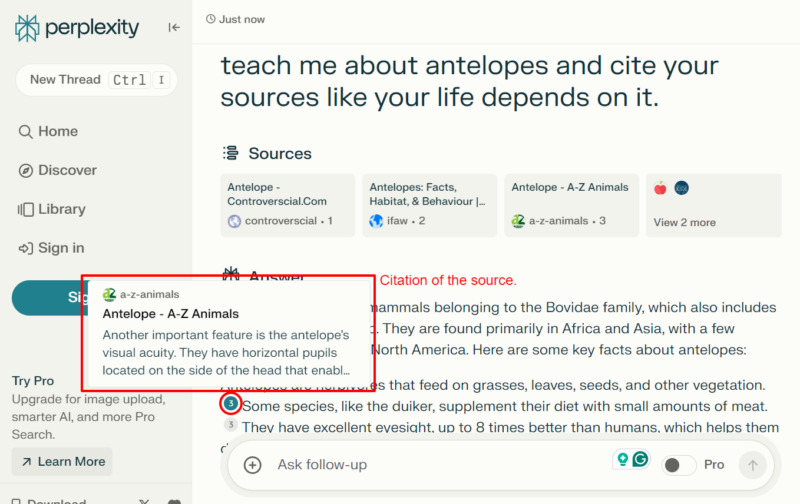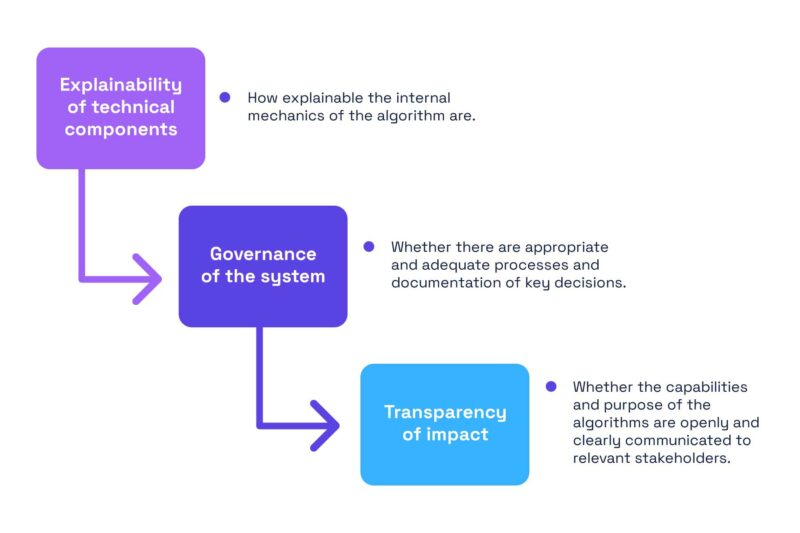AI technologies like ChatGPT are transforming content creation as we know it. They make generating various types of content faster and easier.
Knowing which AI content sources are used to generate material has become important as it can significantly influence the credibility of AI-generated content. Source transparency is essential for both creators and consumers and can impact trust and authority in the digital marketing arena.
In this article, we’ll explore why source transparency matters, how it impacts marketing and SEO, and the ethical challenges it presents. We’ll also discuss how platforms like ChatGPT and Perplexity AI are leading the way in making sources clear.
The Importance of Source Transparency in AI-Generated Content
Showing where the information in AI-generated content comes from helps build trust with users. People like to know that they can check the facts for themselves. Being open about sources is becoming very important to show content is trustworthy and not fake news only made more prolific by AI.
Also, being clear about AI content sources is key in fighting misinformation. As more higher-quality AI content is created, the chance of spreading wrong information increases. Having clear sources helps make sure that readers can verify the facts themselves.
Let’s see how some platforms are making their sources clear:
- ChatGPT sets a good example by showing its sources in updates.
- Perplexity AI links directly to source materials, making it easy for users to see where the information comes from:

- Other platforms, such as Google Gemini, are also starting to include source citations in their content, creating new standards for AI content creation.
Key Takeaway: Being clear about where AI-generated content gets its information from is very important for building trust and fighting misinformation.
The Role of Source Transparency in Marketing and SEO
For marketers, it’s important to show where their content comes from. This makes the content more trustworthy. If your content is seen as reliable and even featured on platforms like Google News, it can bring more visitors to your website. Being open about sources builds trust and makes your brand look like an expert in your area.
Being clear about where information comes from also helps with SEO. When AI-generated content links back to well-known sources, it can boost a website’s position in search engine results. This practice not only makes the content look more believable but also uses the reputation of those sources to increase the website’s online presence.
Truth be told, a lot of brands are using AI now, and the way you can help your AI-augmented content stand out is in being honest about where you’re sourcing your information, via AI or otherwise.
It’s also important to be aware of the different levels of transparency your AI content carries, either by how it’s formulating the content technically, what systems are overseeing it, and how it could be biased or not. Holistic AI explains this more thoroughly here:

Now, let’s look at some clear benefits for businesses and content creators from using transparent sources:
- Adding citations to sources can attract more organic traffic to your website.
- Being open about sources can make your brand stand out as reliable in a busy online world.
- Better SEO rankings from linking to trustworthy sources can lead to more visibility and interaction.
Key Takeaway: Clearly citing sources in AI-generated content is key for boosting brand trust, improving SEO, and getting more traffic.
Challenges and Ethical Considerations
Charging for access to source transparency raises ethical questions about who gets to verify information. This could create a gap between those who can afford to check sources and those who cannot, impacting fairness in information access.
Another issue is making sure the sources AI uses are accurate. If an AI system uses wrong or questionable sources, it can spread false information. This harms its trustworthiness and can be damaging to the public.
The goal is to develop AI that can reliably judge the quality of its sources. Not to mention, the more responsible marketers and other users of AI are now, the less chance there will be of governing entities stepping in later to police the use and applications of AI content sources through regulations.
Here are important steps for content creators and platforms to consider:
- Develop strong methods to check the truthfulness of sources.
- Allow all users to see where information comes from, not just those who pay.
- Keep improving AI algorithms to better identify and use trustworthy sources.
Key Takeaway: Ethical content creation with AI means making it easy for everyone to see sources and making sure those sources are reliable.
Last Thoughts on Transparency with AI Content Sources
Making sure AI-created content shows where its information comes from is crucial. It’s not just a nice feature — it’s necessary for keeping trust and credibility among those who create content and the platforms that share it. By focusing on this transparency, we are committed to sharing content ethically and helping create a community that is informed and trusts what they read.
As AI technology gets better, being open about sources will make digital content more than just trustworthy. It’ll also give people the means to make choices based on information they can trust. And on top of that, it will give you the content fuel you need to scale your output with AI exponentially. Let’s agree to always be clear about where our content comes from. This will help make the digital world a place everyone can trust.
Related Video
If you’re ready to level up your use of AI-generated content, Single Grain’s marketing experts can help!👇
For more insights and lessons about marketing, check out our Marketing School podcast on YouTube.



